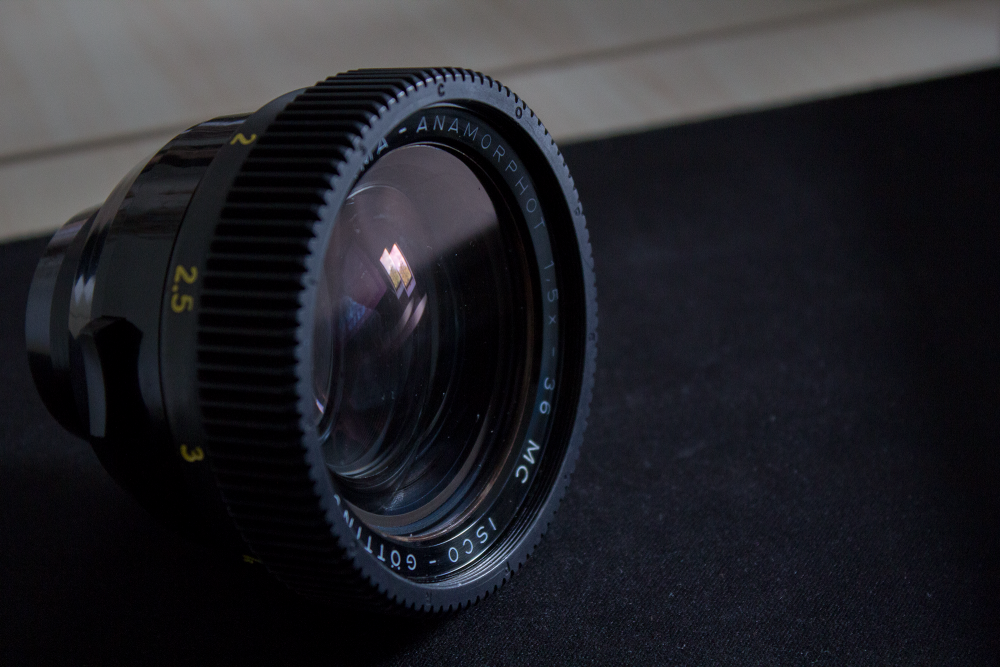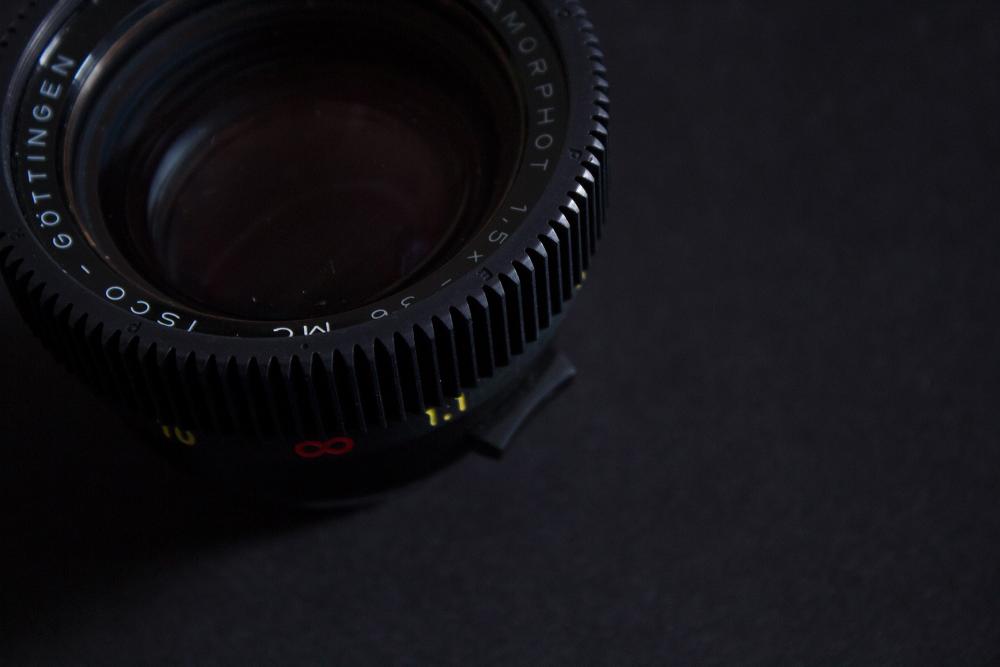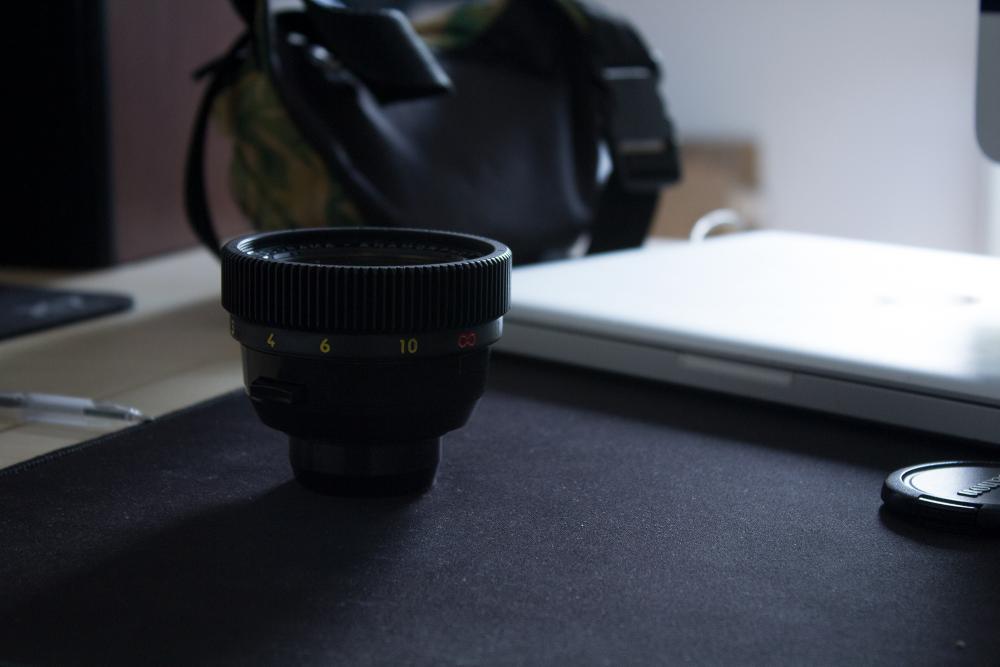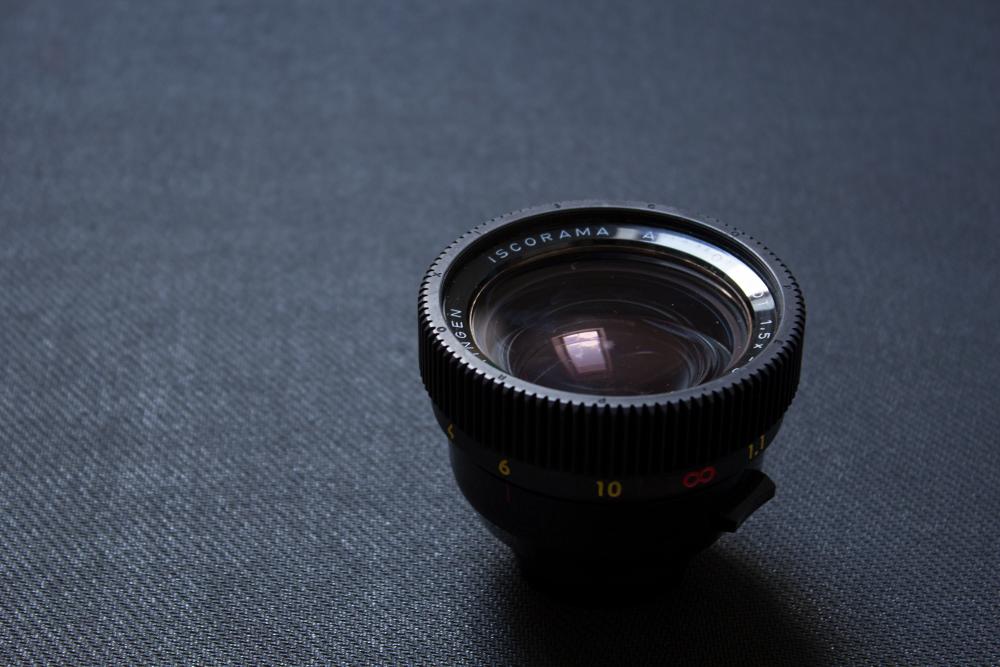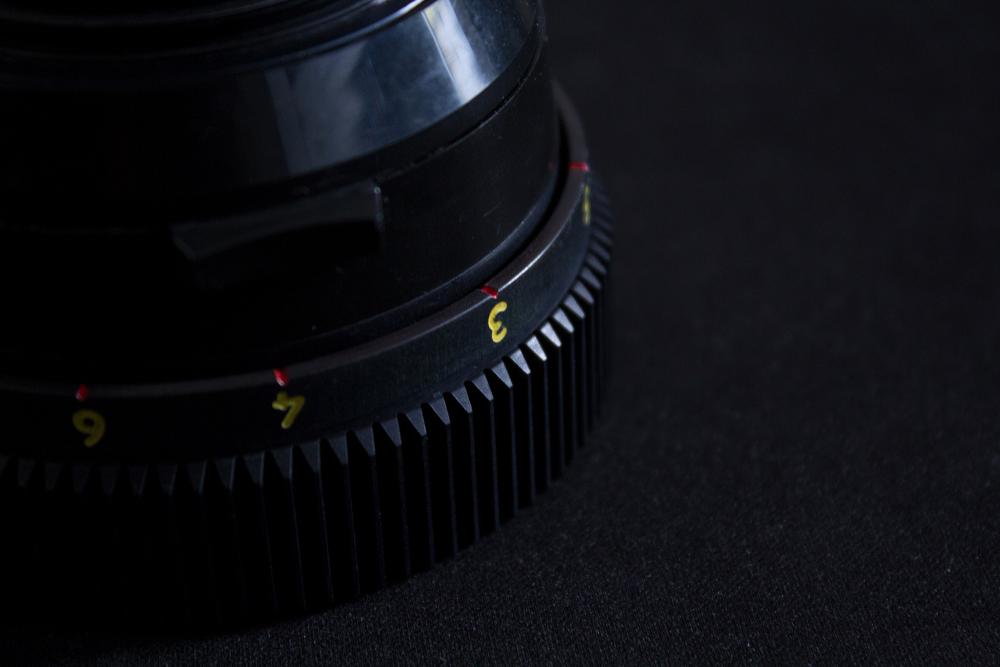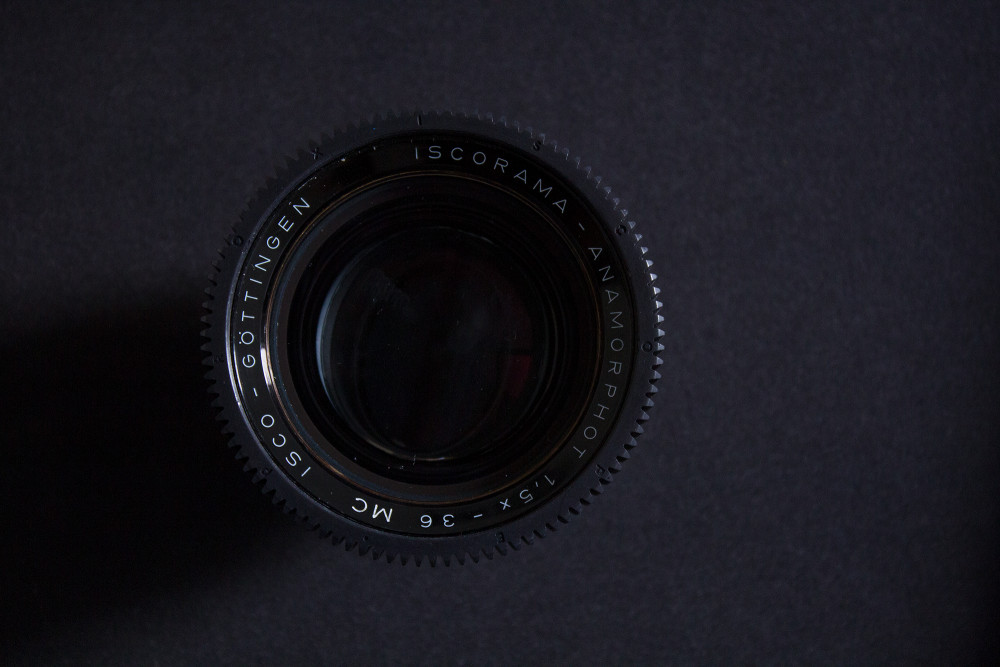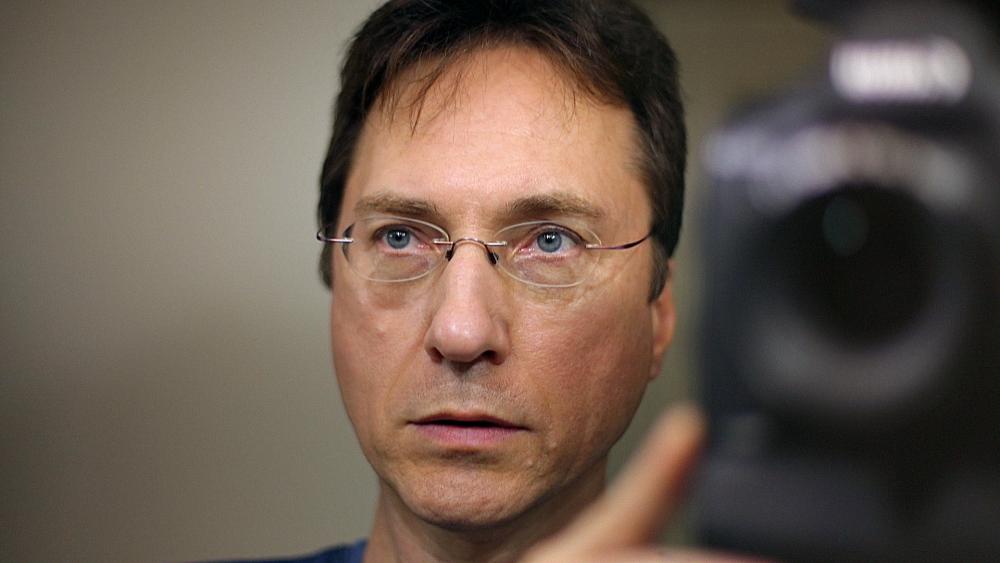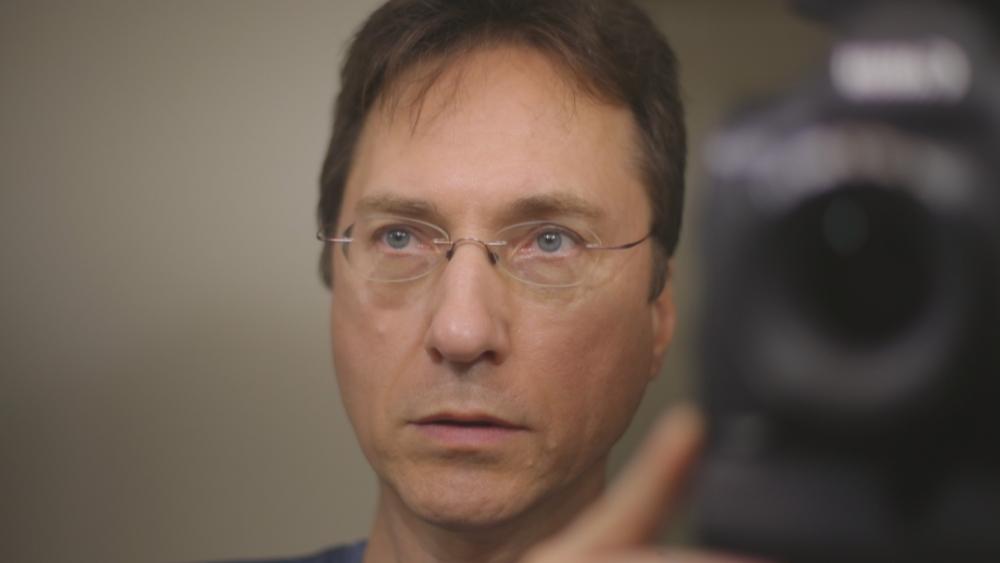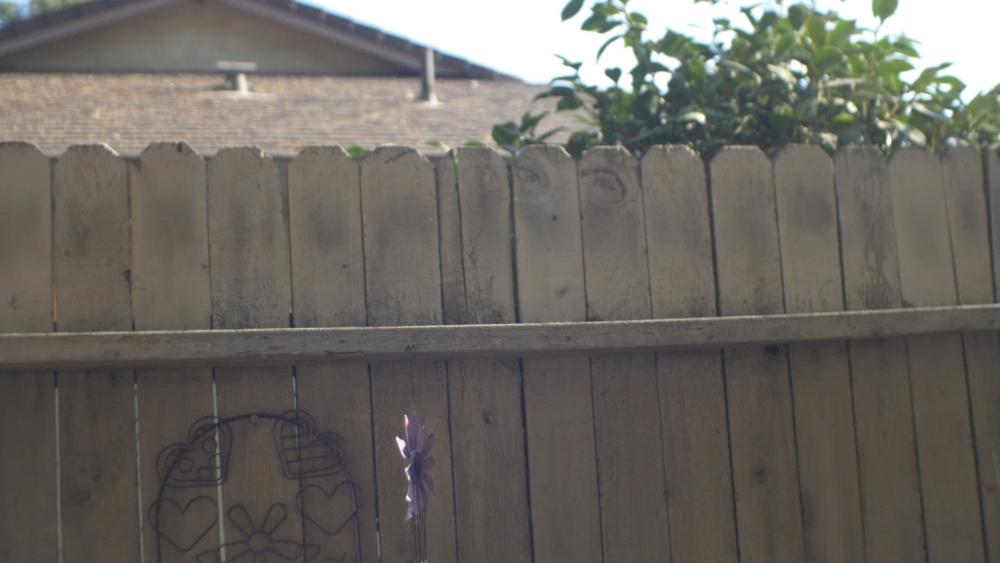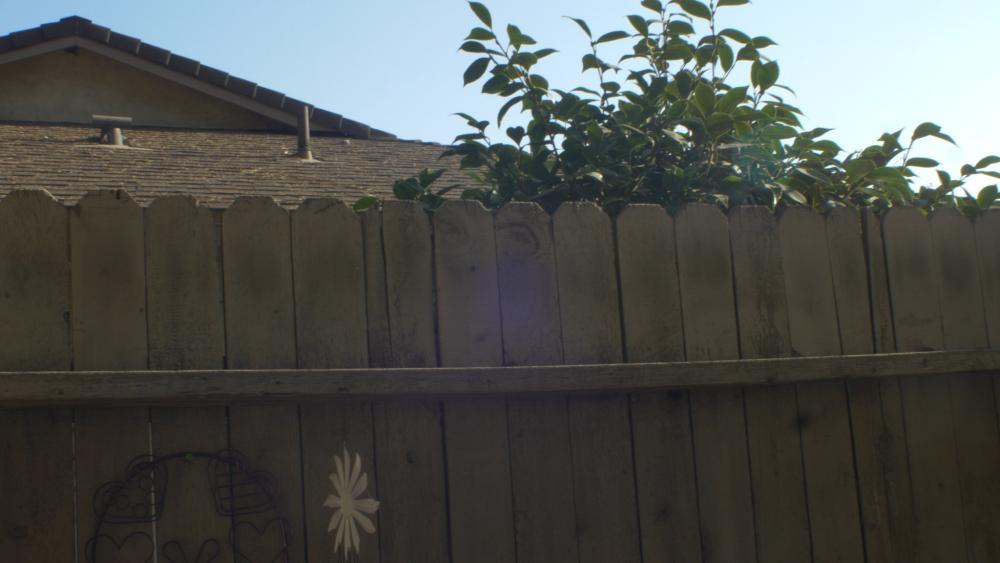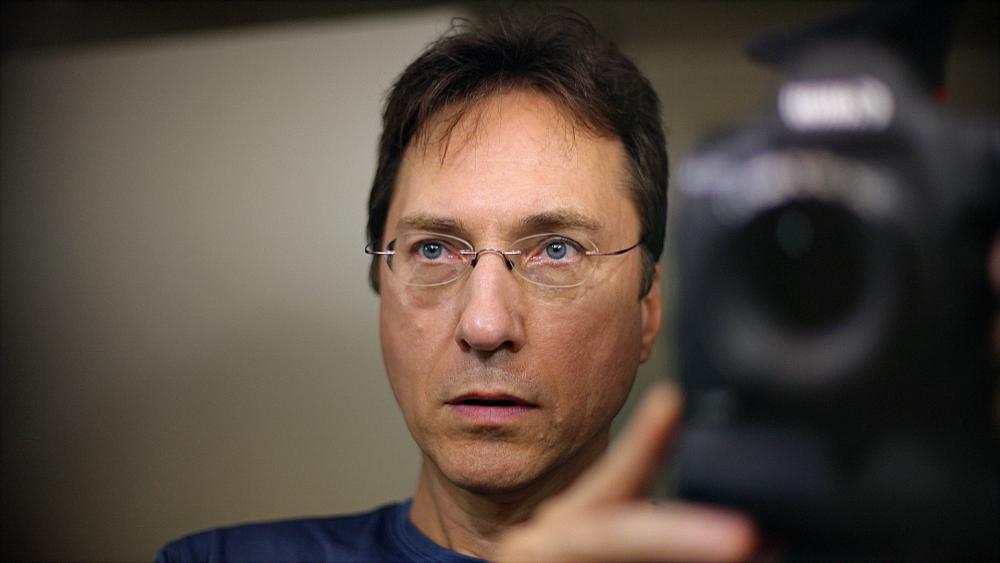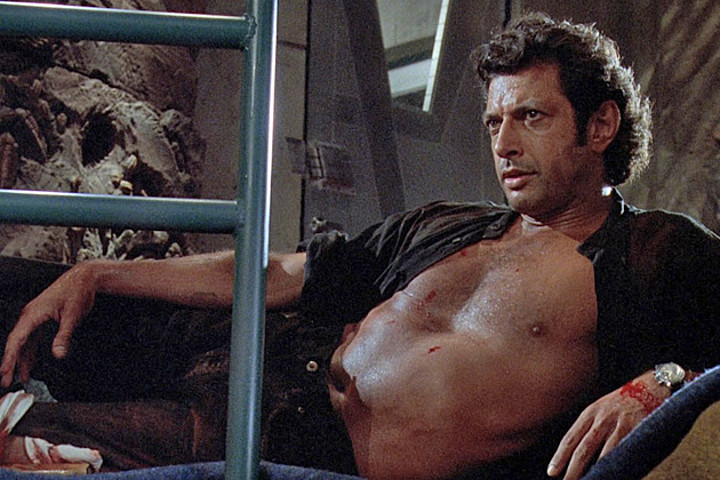Leaderboard
Popular Content
Showing content with the highest reputation on 08/10/2017 in all areas
-
Yes Don't know. Seems to work fine though. AF-S, AF-C. No tracking or face detection (except in HD). Rolling shutter on the camera is fairly average (ie. good in HD and poor in 4k). I'm not a big fan of the HD, especially in low light. The XT2 has several firmware enhancements that make it a lot more usable for video (eg. being able to switch between the EVF and LCD, and ability to change iso while recording). - Others have pointed out other issues that make the camera not a great choice for documentary type work. But would be good for things like narrative where you can take your time.3 points
-

Anybody using Fujifilm cameras for pro video work?
Trek of Joy and 2 others reacted to fuzzynormal for a topic
I've used Fuji for paid gigs. X-pro2. Works okay. Not reliable image. Odd distortion with edges of frames and the Fuji wide angle lens. Anything with auto exposure will result in "step" adjustments. Not smooth changes. Its useable, but doesn't exactly inspire confidence or allow flexibility. Needs exposure compensation in post, and you have to adjust the native files. If your workflow happens to involve a transcode before editing, you're gonna have an issue to deal with insofar as you'll have to adjust levels while transcoding or you're gonna have a lot of detail lost in the blacks and highlights. Most folks don't work this way these days, so most likely that's a moot point, but still mentioning it just in case...using FCP7 ain't a viable option, for instance. Color sure is purty tho'3 points -
Iscorama 36 Proxiscope rehousing – close focus and cine gears
Tito Ferradans and one other reacted to redimp for a topic
Hey guys, I wanted to share this rehousing mod I made recently for my Iscorama 36. It's a replacement for a front piece of old plastic housing, that is made of anodized aluminum and has cine gears, retaining 72mm front filter threads and adding just 50 grams of weight. It took me quite some time to figure out this design and I'm pretty proud of it! It solves some real-world problems like close-focus, enabling you to focus down to 1.1m, but unlike DIY mode it has a hard stop at 1.1m and infinity, and looks way nicer then a grub screw drilled into a hole. I made a little video explaining what it is, since after I posted this on facebook people started asking what it does and what are the specs, and asking how to buy one. https://www.dropbox.com/s/wd1w620ddxnv2je/proxiscope.pdf?dl=0 I have decided to order a small batch of these, and already placed an order at one of the shops that does the first stage of the milling. I will make another video showing a closeup process of swapping the housings, so people can evaluate the effort and see if the price (which will be announced at the same time) is right for them. This is intended as a do-it-at-home kind of mod, but you can also take it to the nearest photo technician and they'd be able to do it for you, it's a simple process that takes 3-5 minutes to perform. I also made a PDF with some specs, you can find it here. https://www.dropbox.com/s/wd1w620ddxnv2je/proxiscope.pdf?dl=0 If you're interested in getting one – shoot me a message and we'll figure it out, there's a little queue forming already2 points -
Sometimes we need to enhance the detail of a shot: a very soft lens, slightly out of focus, slow motion, post cropping (for story/emotion or after stabilization), and so on. Most are familiar with the sharpen effect and the unsharp masking effect. We can combine both effects, as well as use unsharp masking to create a local contrast enhancement effect as well. Canon 1DX II and Canon 50mm 1.4 at 1.4, 1080p (Filmic Skin picture style): Multi-spectral Detail Enhancement (let's call it MSDE, based on the physics of Acutance) Fine noise grain: adds texture and increases perception of detail (Noise effect: 2%, color, not clipped) High frequency sharpening: in PP CC this is called Sharpen (as a standalone effect) or via Lumetri/Creative/Sharpen (as used here: 93.4) Mid frequency sharpening: Unsharp masking effect with amount 41 and a radius of 5 Low frequency sharpening (Local Contrast Enhancement or LCE): Unsharp masking effect with amount 50 and a radius of 300 While this may be a bit too sharp/detailed for some, it illustrates MSDE, and one can add detail to taste using this technique. Note we didn't use a contrast effect or curves to achieve this look. MSDE can also be use to improve HD to 4K upscales: apply after upscaling. Also a great way to use Canon's soft-ish 1080p along with DPAF (since it's not currently available in any other cameras on the market). The GH5 is the new kid on the block with excellent detail, however Canon still looks more filmic to me and has excellent AF Someday Adobe will GPU accelerate their Unsharp Mask effect (it's a trivially easy effect to code too!), so this can easily run in real-time while editing.2 points
-
Paul Thomas Anderson: Cinematographer
Liam and one other reacted to Fritz Pierre for a topic
There are no hard and fast rules...it depends on the Director's style, preference and of course abilities...on big productions neither Directors or DPs operate as a rule of thumb...the 1st AC usually shoots most of the film, though on most shoots, the Director or DP may get in behind the camera for a particular scene, if the AC is not capturing a frame in the way a Director wants to convey something....when you're on a shoot and a scene is being filmed, the crew quiets down a lot...they are in a state of observation and readiness...the Grips, Gaffer, Make Up, Wardrobe, Art department, Props, Director and DP, Script Supervisor..everyone is watching what they are responsible for...while the AD and the AC and the actors are shooting that particular scene...If the Director can observe both the performance of the actor/actors, and how they move through the light and whether the light works as they hit their marks throughout the scene and make the decision as to whether everything meshed, well good for him/her. In the old days the ACs use to be sensitive to the expressions on the faces of their DPs after a take...the code for another take used to be "do you want a hair in the gate?"...this way the DP would ask for another take...circumventing the Director, if he saw something happening light wise, that he was not happy with....personally, I would never shoot without a DP, if I was making a feature.2 points -
One thing that I think can be attributed to the X-Trans filter array is the high iso performance. Most other sensors give a lot of colour noise at high ISO's which is ugly. The X-trans grain is for the most part, colourless. Makes the images look a lot more film-like and a lot more pleasing to the eye.2 points
-

Slow-mo shootout - which camera gives the most detail at 120fps?
Inazuma reacted to Andrew Reid for a topic
I recently decided to find out which of the current 1080/120fps capable cameras does it the best. Read the full article1 point -

Multi-spectral Detail Enhancement
jcs reacted to EthanAlexander for a topic
He's a DP not an editor ... (I agree) I personally prefer the Alexa 65 from everything I've seen, whether or not it's true 4K. Just preference. Don't get me wrong though: I'm a huge Sony fan and have watched Oblivion several times on Blu-Ray through a sony BD player to a Sony 4K HDR tv, and the F65's no doubt a FANTASTIC camera. (Supposedly sony products use the same algorithm to upscale to 4K as they do to downscale the movie to HD BD. Can't remember where I saw that, but it was definitely an ad for the F65.) I totally get where you're coming from, and I've learned a lot from what you post here on EOSHD just from exploring the idea of "true 4K." My only thing, and the reason I am glad Yedlin made the video, is that I'd much rather consumers (professional, commercial, hobbyists alike) be aware of how much goes into an image than just resolution and start demanding things like better compression and color space. This is especially true because at a certain point the captured pixels are surpassing the resolving power of all but the most detailed lenses.1 point -
1 point
-
1 point
-

Is 8K too much?
bamigoreng reacted to sudopera for a topic
Excellent two videos from cinematographer Steve Yedlin via the link below, where he tries to make a point that quality of pixels in a camera is far more important for the perceived cinematic experience than the race in quantity, now that most high end cameras in his opinion already surpassed the resolution threshold required for image with good clarity and perceived sharpness. In the first video he shows the same scenes shot with 6 different cameras (2 analogue) and all of the footage is graded and matched in post. He doesn't reveal what camera was used for particular shot just to prove his point. Second video shows post production. This is quite relevant for this topic so just wanted to share. http://yedlin.net/ResDemo/1 point -

GH5 DCI Or UHD With 1.33x Anamorphic
elgabogomez reacted to DBounce for a topic
Ok, now I understand why I am confused1 point -
GH5 DCI Or UHD With 1.33x Anamorphic
Justin Bacle reacted to elgabogomez for a topic
True CinemaScope is a relative term, it was originally 2.66:1 as it was expanding a 4:3 negative x2. Later in cinema history it got cropped to 2.39:1 to allow the sound strip in the final edited film. At some point it became 2.35:1 or in some cases 2.4:1 and all 3 (2.4, 2.39 and 2.35) are academy accepted as wide screen formats. But 2.66 is the "true CinemaScope" and one could argue that it requires a 2x lens... So use what you want to achieve the format you want. The 1.85:1 with a 1.33 anamorphic lens gives you 2.46:1 aspect ratio (if the lens is really 1.33x).1 point -
Steven Soderbergh does that very often. Directs and also does the cinematography. Just imagine that....it must be a very hard thing to do Imo you should NEVER do that. The same way a director should never edit, but hey....whatever works for them1 point
-

Lenses
mercer reacted to Matt Kieley for a topic
I just did a test for the blue spot. It seemed to only happen with the aperture stopped down to f/16. When I used an ND and shot wide open it didn't seem to be there. The spot only seemed to appear the more I stopped down. F/16, no ND: f/2.8 w/ Hoya ProND 4-stop: I'm sure the better speed boosters won't require you to shoot wide open, but for the price, this is a good enough solution for me.1 point -
I like it Jon. I think your G85 needs a break and that X-T2 needs a workout.1 point
-

NEW Cell Phone with ALTERED Reality!
Neumann Films reacted to Andrew Reid for a topic
Did you post this at RED User as well? I hope so They will be... ahem...GREEN with envy and cancel their pre-orders Does it have an 8K module coming 2047?1 point -
Thanks guys, @jonpais, that looks lovely! @aldolega - It's certainly an option, but also like €1000 more. If I was spending that much I'd say hell to the size and grab an inferno for 60p haha.1 point
-

Nikon Cameras for Video
webrunner5 reacted to IronFilm for a topic
If those are all you can afford, then I recommend sticking with your D5200. Keep saving up! Or spend it on some other area of film gear. As it is best (as a rough rule of thumb) to at least skip one generation ahead, when upgrading. So going D5200 to D5300 doesn't make much sense. It makes more sense to instead to upgrade to D500 or D7500 (or maybe a D5700 when it comes out?? If it gains 4K too), however you've said they're outside your price range.1 point -

Anybody using Fujifilm cameras for pro video work?
jonpais reacted to Trek of Joy for a topic
Most of the pros/cons have already been addressed. I will add the XT2's image also oversampled so its pretty much aliasing/moire free, I hate moire so that's a big plus for me. There's a thread here where someone matched a XT2 to a C100 with a color checker, so you can use them side-by-side. No zebras. I shot with Sony video cams for years and the A7s before moving to the XT2, I really miss zebras as they've always been my main exposure tool. Its ergos can be a little annoying at times - I shoot stills/video at the same time and there's no way to just simply hit record - you have to move the tiny mode switch four clicks in either direction to go from single shot to video. Really wish Fuji had put a dedicated record button or at least put single shot right next to video so you could click back and forth without having to check what mode you're in. If you miss you're in bracketing or multi shot. I'm traveling for a year with my cameras and find this especially annoying since I grab stills and video of everything I find interesting, so there's a lot of fiddling with that damn switch. With stills the X-trans still has the worm/watercolor issue with fine detail if you're using Lightroom. Its not as bad as the 16mp sensor, but it's still there. Personally if you're in the Canon camp with the C100, I'd go with Sony for the simple reason of electronic adapters - your Canon lenses will be fully functional on all bodies. Its a great camera, but with the a6500 offering IBIS and better AF - I'm not sure I'd be shooting Fuji right now if the a6500 was released instead of the a6300 - which I sold to go Fuji. Especially with the recent Sony lens releases. Chris1 point -
Nikon Cameras for Video
IronFilm reacted to Mattias Burling for a topic
I think the Nikon flat is sweet and grades very well. Plus it gives you 13 stops of usable dynamic range. Information which is lost when not using flat.1 point -
Don't forget about the Video Devices PIX-E5. It only does 4k up to 30fps, so it's not the best choice for a GH5, but it is smaller than the huge 7" recorders. Built like a tank too, which is good but also kinda bad (weight).1 point
-

Multi-spectral Detail Enhancement
EthanAlexander reacted to jcs for a topic
@EthanAlexander thanks, yeah I've been mentioning LCE for a while, thought I'd expand the concept and show how it's done. I'd use the same settings for 4K and do minor tweaks as desired. Sharpen is typically implemented with a convolution sharpen, where surrounding pixels are used to increase high-frequency detail (by enhancing differences). Unsharp Masking works by subtracting a blurred copy (reducing low frequency: a high-pass filter), and has a variety of uses based on the radius. FCPX seems to have a hybrid sharpen- a plugin which does PP/AE style sharpen and Unsharp Mask is probably needed for FCPX. AE CC Test: Same soft 1DX II 1080p file (no stabilization, so wider shot), 4K Comp. Resized to 2K before upload (tried uploading 4K, was resized to 2K by website, so uploaded Photoshop resized 4K to 2K instead): AE Settings: Noise: 2%, color, no clipping Sharpen: 50 Unsharp Mask: Amount: 41, Radius 5 Unsharp Mask: Amount 50, Radius 300 AE's Sharpen appears to have a bug- edges sharpened without repeat, so thin line around border: do Transform / Scale to fix (in this case 200% became 201% (2K to 4K scale)).1 point -

Anybody using Fujifilm cameras for pro video work?
Tim Sewell reacted to BTM_Pix for a topic
This is a decent comparison to summarise the differences in video performance between the X-T2 and the X-T20. The headline difference is in the line skipping on the X-T20 which gives the X-T2 the edge (ho ho) in terms of sharpness but at the expense of the additional crop factor. Its by no means a night and day difference though so they will cut together without a major issue. The X-T2 can also do log albeit only to an external recorder. On the other hand the X-T20 does touch AF which might be something that would be appealing. There are other additional hardware differences that favour the X-T2 such as a better EVF, dual card slots, the battery grip and so on so there's no question its a higher end offering but, IMO, I think a better spend instead of two X-T2's would be one X-T2, one X-T20 and use the saving on a Crane or other gimbal. You'd be getting near identical IQ so most of the advantages of two of the same model but with the advantage of the flexibility of different form factors (the X-T20 is not far off GX80 tiny) and also addressing its achilles heel compared to GH5 etc of not having IBIS.1 point -

Slow-mo shootout - which camera gives the most detail at 120fps?
Andrew Reid reacted to Oliver Daniel for a topic
There's a plugin that gives some kind of resolution voodoo which I use for 120fps clips. It's called Finisher. (also known as Crumplepop Finisher). The plugin dramatically increases the perceived resolution with clever sharpening. I've found it doesn't work too well on Canon DSLR's, but is awesome for Panasonic and Sony.1 point -
Slow-mo shootout - which camera gives the most detail at 120fps?
Andrew Reid reacted to Eno for a topic
Thank you very much for the slow motion comparison test @Andrew Reid!1 point -
Slow-mo shootout - which camera gives the most detail at 120fps?
Andrew Reid reacted to thecouchguy for a topic
Very good test, thank you for doing this mate. A valuable resource for anyone shopping for these cameras.1 point -
.jpg.d886fb759513ad56dc4a3adc01c93c2a.thumb.jpg.2cd049b54bc05dcaf5f83dd8b81fbe9b.jpg)
GH5 owners - 6 months later, how are you liking it?
hyalinejim reacted to manueldomes for a topic
In my experience, set zebra to 80% and expose to the right (i.e. dial down exposure juuust a notch once zebra appears in the brightest part of the frame you are going to shoot). Then pull down in post if your scene is too bright. Quick and easy.1 point -
1 point
-
Looks like the Fuji X-T20 gets 4K!
Grégory LEROY reacted to Inazuma for a topic
Does the xt20 have some of the limitations of the pre-firmware xt2? Such as, when recording, the inability to change iso or switch between evf and rear lcd?1 point -
jonpais I shoot at least every week, its my job, i"m not able to make excuses, weak or otherwise: It pays my mortgage. I currently use the d800 for stils and the d5500 on a gimbal for video. Having one camera to do both would speed up my workflow and reduce my hassle immensely. Currently there is no camera that shoots stills with the same DR as the d800 and full frame 4k. If I went the a7r2 I'd have to change lenses to shoot 4k crop defeating the purpose. A7s2 does not have the same DR so I'd have to bracket stills meaning longer in post. D810 is a possibility but its very heavy for gimbal work blah blah blah. If I want to grade my work a lot, whats it to you? I like it. And why would you frame my flippant comment about a 4k mirrorless nikon as a childish plea for a new toy?1 point
-

Is 8K too much?
Dick Sweeney reacted to Hans Punk for a topic
...saying that, the example video does look a bit distracting, mainly because the detail is being combined with very deep depth of field, causing a bit of 'sensory overload' - especially when subjects have vivid colour. I'm also not sure how many actors and actresses will appreciate every pour of their skin being revealed in a closeup at 8k, they complain enough as it is at 4K which is why digital makeup has become a very common thing these days. My guess is that by the time affordable 8k consumer cameras become common place, I suspect the actual resolving resolution will be closer to 4K after broadcast/streaming compression takes its toll, not to mention whatever tricks the camera is doing at source to quickly write to compact media. For now, Red seem to be getting it working pretty well. Mark Toia seems to describe the advantages of 8k as a capture format quite nicely (even though it's a bit of a sales pitch)..1 point -
Is 8K too much?
EthanAlexander reacted to enny for a topic
I don't think we will ever watch films in VR well i don't i will just not the same experience human are social animals we like to watch film together be together and in my experience with VR is solitary experience and lets not forget that 20% of population cant handle VR motion sickness if VR ever takes off it will be in Games, architectural design and real estate. And watching thing in 8k that is few cm from your eyes i see lots of problems mentally and physically. PS turning your head around in 360 watching Jurassic park looking for dinosaurs looking up and down and shit i just don't see it. Unless you like to see Jeff in 8k 360 up close and personal1 point -

Is 8K too much?
EthanAlexander reacted to Juxx989 for a topic
Geez they must have Broken the saturation slider for green in grade.... its glowing like my green highlighter pen....1 point

